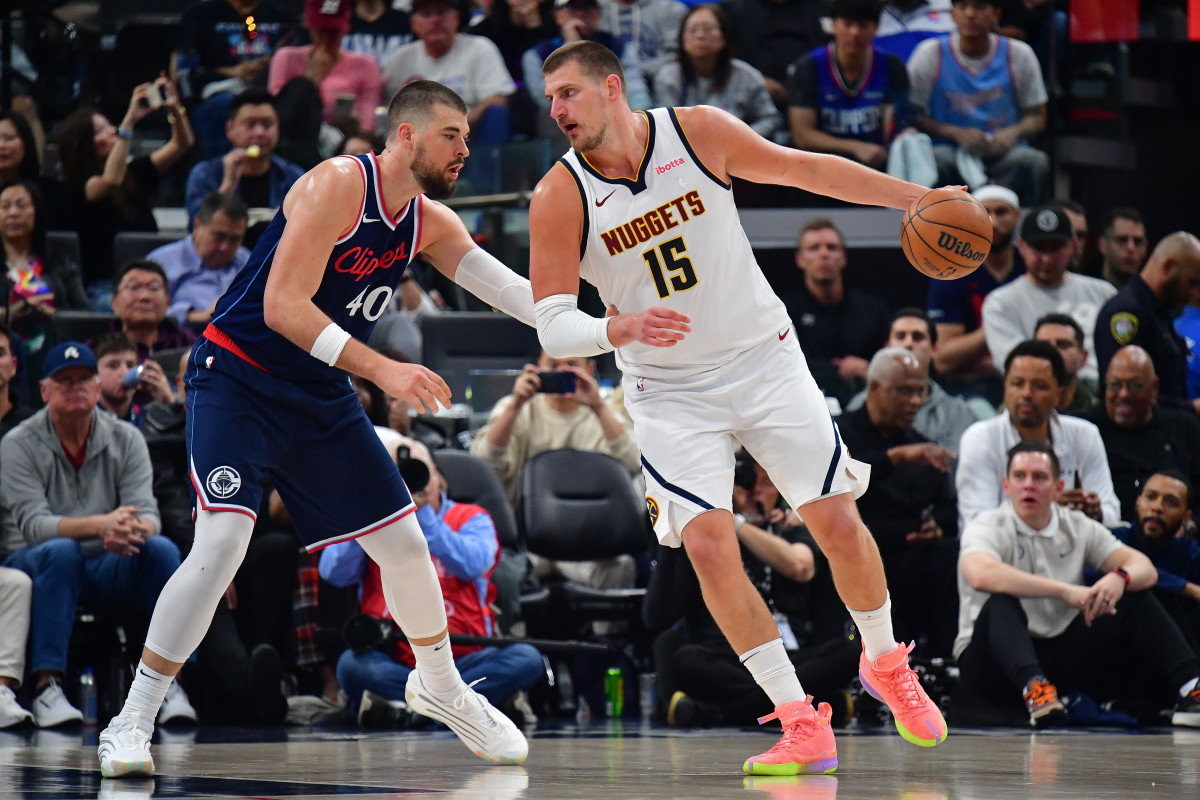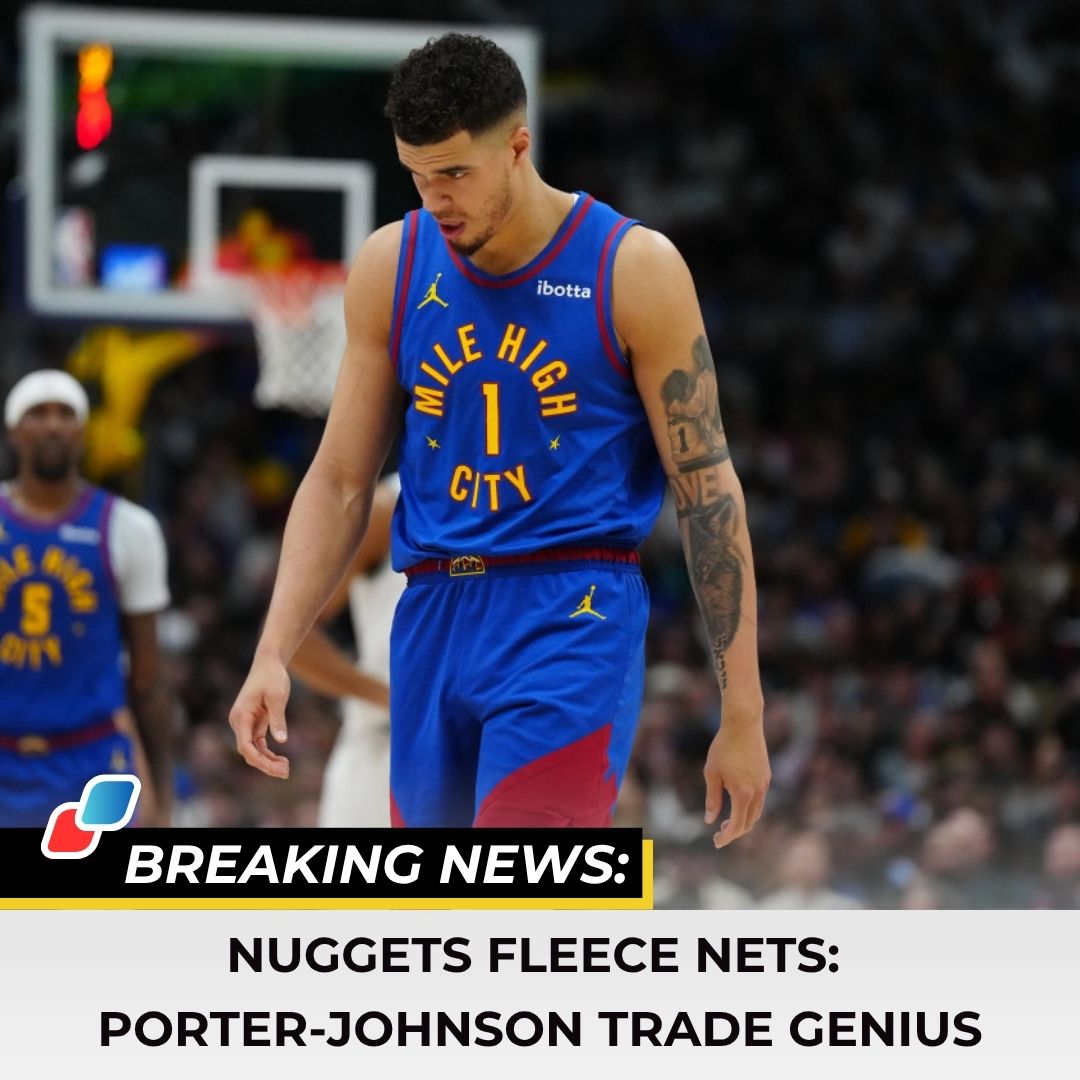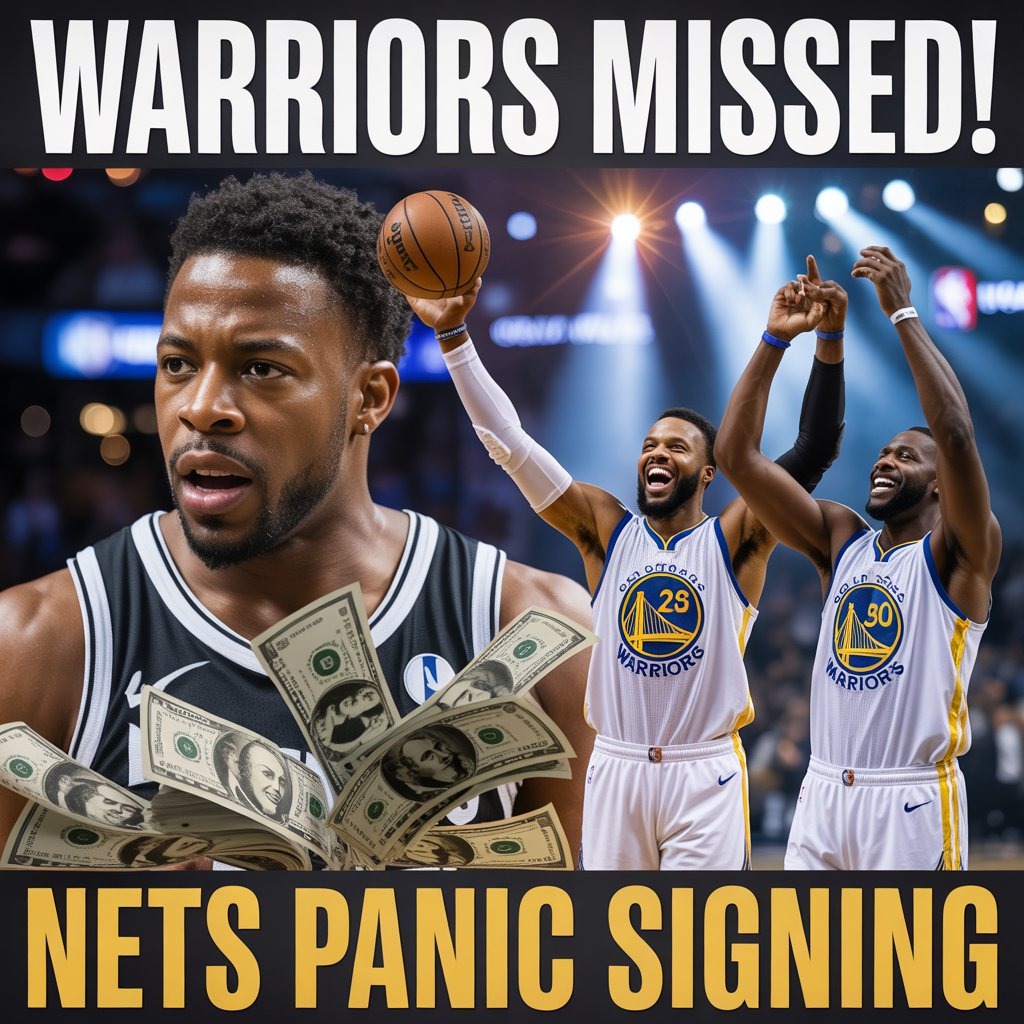BREAKING: Jokic’s MVP Performance Didn’t Prevent Game 3 Loss
Nikola Jokic had yet another exceptional individual performance but could not guide the Denver Nuggets past the Los Angeles Clippers in a pivotal Game 3.

The Denver Nuggets walked into the Intuit Dome with momentum and playoff experience, but walked out with questions after a humbling 117-83 blowout loss to the Los Angeles Clippers in Game 3 of their first-round series. Now trailing 2-1, the defending champs looked nothing like themselves in the first-ever playoff game at the Clippers’ flashy new home.
Nikola Jokic was his usual brilliant self, posting a 23-point, 13-rebound, 13-assist triple-double, his second of the series, but he got little help. Jamal Murray matched him with 23 points, but outside of Denver’s star duo, the rest of the roster struggled to keep up with a locked-in Clippers squad that took control early and never looked back.
What began as a back-and-forth affair quickly spiraled late in the first quarter. Up seven in the opening minutes, Denver was then blitzed by a 23-2 Clippers run that carried into the second quarter. James Harden sparked the surge with 11 of his 20 points during that stretch, and by halftime, the Clippers had built a 20-point cushion that deflated Denver’s rhythm.
The Nuggets never seriously threatened again. Their offense stagnated, their defense couldn’t contain L.A.’s spacing, and the deep Clippers rotation capitalized. The Clippers knocked down 18 threes to Denver’s seven, dominated the boards 48-38, and held a staggering 31-6 edge in bench scoring.
Michael Porter Jr., who has been battling a sprained left shoulder since Game 2, was clearly limited, managing just seven points and six rebounds in 26 minutes. Meanwhile, Russell Westbrook, who shot 1-for-5 from deep, left the game early in the second half with left foot inflammation, further thinning Denver’s backcourt options.
Former Clipper Chris Paul watched from the stands while DeAndre Jordan, another Lob City relic, logged five minutes for the Nuggets in a strange throwback moment inside the team’s brand-new arena. Game 4 looms large on Saturday.
The Nuggets will need a sharper, more disciplined performance if they want to avoid falling into a daunting 3-1 hole. As we wait and see, we provide a rating to every Nuggets player on Thursday night.
Nikola Jokic: A
Stats: 23 PTS, 13 REB (1 OREB, 12 DREB), 13 AST, 1 STL, 0 BLK, 2 TO, 1 PF, 9-14 FG, 2-3 3PT, 3-4 FT, -20, 37 MIN
Jokic did everything in his power to steady the Nuggets amid chaos, delivering his second triple-double of the series with 23 points, 13 rebounds, and 13 assists. He was efficient from the field, shooting 9-of-14, and showcased his usual command of the offense. Despite the lopsided score and poor showing from the supporting cast, Jokic remained composed and productive, the lone Nugget who looked like he belonged on a playoff stage.
Jamal Murray: B+
Stats: 23 PTS, 0 REB (0 OREB, 0 DREB), 4 AST, 1 STL, 0 BLK, 3 TO, 3 PF, 8-15 FG, 1-4 3PT, 6-6 FT, -15, 36 MIN
Murray mirrored Jokic in scoring with 23 points and hit all six of his free throws, but the lack of rebounding and playmaking from the guard spot stood out. He struggled with turnovers and couldn’t fully bend the Clippers’ defense once they locked in. While his shooting was solid overall, Murray didn’t provide the lift Denver needed to counter L.A.’s onslaught, and he was noticeably less assertive in the second half.
Aaron Gordon: B
Stats: 15 PTS, 7 REB (5 OREB, 2 DREB), 0 AST, 0 STL, 0 BLK, 2 TO, 3 PF, 6-16 FG, 2-4 3PT, 1-1 FT, -10, 32 MIN
Gordon brought hustle and physicality, particularly on the offensive glass with five of his seven boards coming there. He added 15 points and connected on two of four threes, a bright spot in a team-wide shooting slump. But his inefficiency around the rim and minimal defensive impact, particularly in transition, kept him from being a true difference-maker when the game slipped away.
Christian Braun: C+
Stats: 9 PTS, 6 REB (1 OREB, 5 DREB), 1 AST, 1 STL, 1 BLK, 1 TO, 2 PF, 4-9 FG, 0-1 3PT, 1-3 FT, -11, 38 MIN
Braun played heavy minutes and offered energy on both ends, grabbing six rebounds and tallying a block and a steal. But his offense remained limited, as he shot just 4-of-9 from the field and missed both his free throws and lone three-point attempt. While not disastrous, his lack of scoring punch was felt more acutely with Porter Jr. struggling and the bench offering nothing.
Michael Porter Jr.: D
Stats: 7 PTS, 6 REB (1 OREB, 5 DREB), 1 AST, 0 STL, 1 BLK, 1 TO, 1 PF, 2-9 FG, 1-6 3PT, 2-2 FT, -25, 35 MIN
Porter Jr. looked like a shell of himself, clearly hampered by what could be a nagging injury. He managed just seven points on 2-of-9 shooting and was off-target from deep, hitting just one of six triples. Though he grabbed six boards and blocked a shot, his inability to stretch the floor or generate offense helped the Clippers pack the paint and contain Denver’s attack.
Peyton Watson: D
Stats: 2 PTS, 2 REB (0 OREB, 2 DREB), 0 AST, 0 STL, 0 BLK, 1 TO, 3 PF, 1-4 FG, 0-0 3PT, 0-0 FT, -29, 18 MIN
Watson’s Game 3 showing was largely forgettable, as he contributed only two points and two rebounds in 18 minutes. He failed to make an impact on defense, and his offensive game continues to be a work in progress. With Westbrook going down, Watson had an opportunity to step up, but he looked overwhelmed against the Clippers’ poise and pace.
Jalen Pickett: D
Stats: 0 PTS, 0 REB (0 OREB, 0 DREB), 0 AST, 0 STL, 0 BLK, 2 TO, 0 PF, 0-1 FG, 0-0 3PT, 0-0 FT, -23, 11 MIN
Pickett’s 11-minute stint was rough. He failed to record a single stat outside of two turnovers and was a team-worst -23 in that short span. The Clippers hunted mismatches and quickly neutralized his minutes, exposing Denver’s lack of reliable depth when things started spiraling.
Julian Strawther: D
Stats: 0 PTS, 1 REB (1 OREB, 0 DREB), 0 AST, 0 STL, 1 BLK, 0 TO, 3 PF, 0-1 FG, 0-0 3PT, 0-0 FT, -4, 11 MIN
Strawther also couldn’t offer any spark, going scoreless with just one offensive rebound to his name. In his 11 minutes, he racked up three fouls and missed his only shot attempt. Like others off Denver’s bench, he looked out of rhythm and out of place in a high-stakes environment.
Russell Westbrook: N/A
Stats: 3 PTS, 1 REB (0 OREB, 1 DREB), 1 AST, 0 STL, 0 BLK, 1 TO, 1 PF, 1-5 FG, 1-5 3PT, 0-0 FT, -16, 9 MIN
Westbrook played just nine minutes before exiting with foot inflammation. He hit one deep three but missed four others, and his physical burst was clearly missing even before the injury. Denver badly missed his energy off the bench in what turned into a brutal showing from the second unit.
Zeke Nnaji: N/A
Stats: 1 PTS, 1 REB (1 OREB, 0 DREB), 0 AST, 1 STL, 0 BLK, 1 TO, 2 PF, 0-2 FG, 0-2 3PT, 1-2 FT, -8, 5 MIN
Nnaji saw limited minutes in garbage time and didn’t offer much during his five-minute run. He missed both of his field goal attempts, including two threes, and committed two fouls. While he added a steal, the moment was too big for him to make any meaningful impact.
Hunter Tyson: N/A
Stats: 0 PTS, 0 REB (0 OREB, 0 DREB), 0 AST, 0 STL, 0 BLK, 1 TO, 0 PF, 0-1 FG, 0-1 3PT, 0-0 FT, -8, 5 MIN
Tyson logged five inconsequential minutes late in the blowout, going 0-for-1 with a turnover. There was little he could do to alter the trajectory of the game, and his presence was purely procedural as coach Adelman emptied the bench.
DeAndre Jordan: N/A
Stats: 0 PTS, 1 REB (1 OREB, 0 DREB), 0 AST, 0 STL, 0 BLK, 1 TO, 2 PF, 0-0 FG, 0-0 3PT, 0-2 FT, -1, 5 MIN
In a nostalgic twist, Jordan checked into the game but didn’t register a point in his five minutes, missing two free throws and picking up two fouls. He grabbed one offensive rebound, but his cameo was more symbolic than competitive, another reminder of how far the Nuggets had fallen by night’s end.






